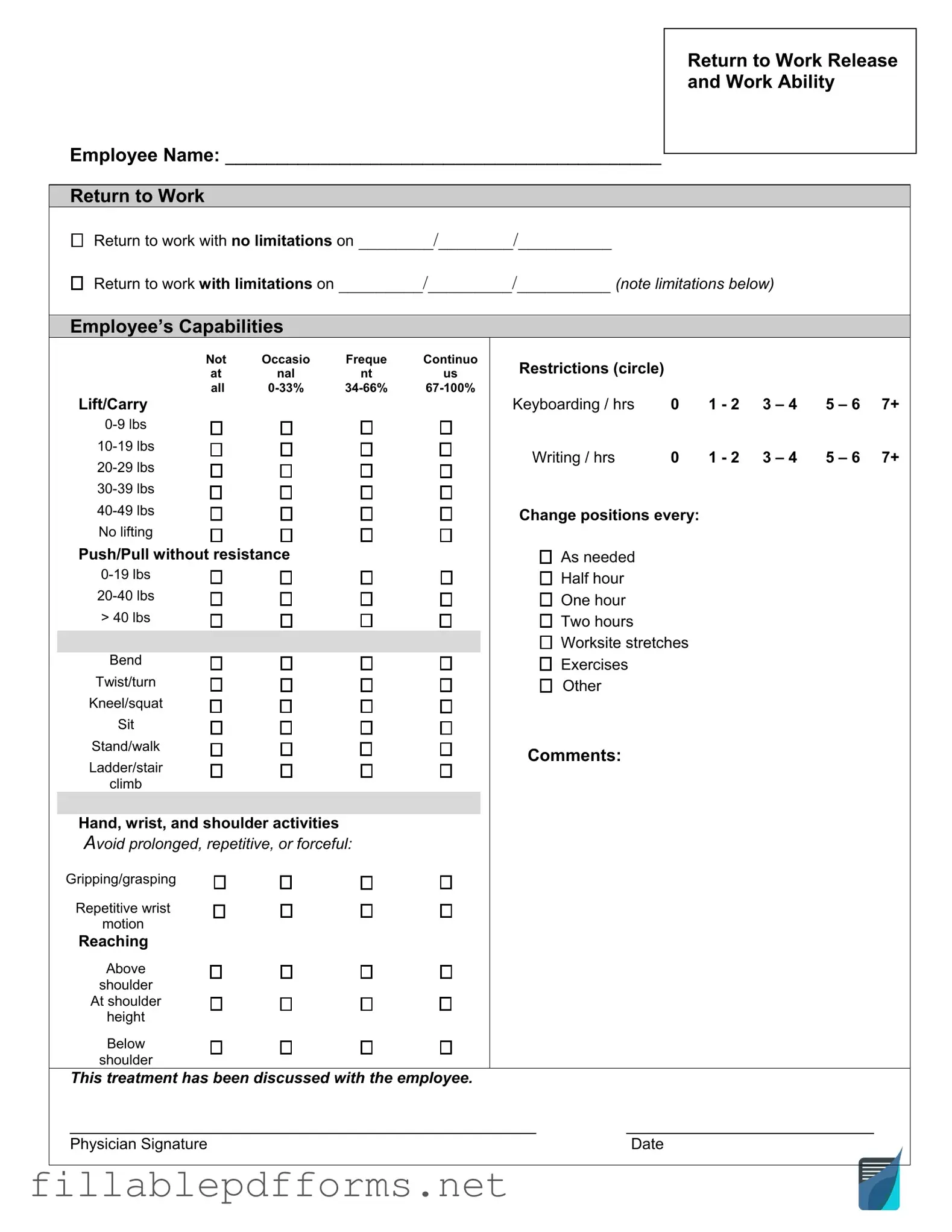The Work Release form serves as a crucial document in various employment and legal contexts, allowing individuals to secure permission to leave their usual duties for specific work-related tasks. This form is often utilized by employers to manage time away from work, ensuring that employees can fulfill obligations such as attending court hearings, medical appointments, or other essential commitments without jeopardizing their job status. It typically includes sections for the employee's information, the purpose of the release, the duration of absence, and any necessary approvals from supervisors or relevant authorities. By providing clear guidelines and expectations, the Work Release form helps maintain transparency between employees and employers, facilitating a smoother process for those needing temporary leave. Understanding its components and proper usage can significantly benefit both parties, promoting a cooperative work environment while respecting individual needs.
